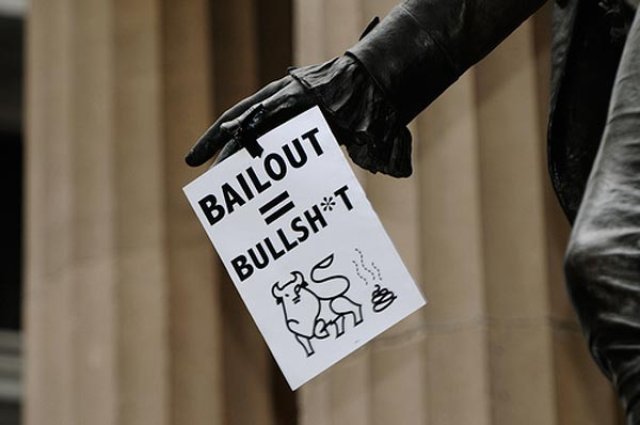
The Australian dollar has become a favourite for international currency speculators. Fuelled by expectations of rising interest rates, the A$ has increased in value from US$0.82 in June, to almost $0.98 on October 12.
Some expect the $A could surpass the value of the US$ in coming weeks.
The Australian dollar’s rise has given voice to concern among rural and manufacturing exporters. One of independent rural MP Bob Katter’s demands after the August 21 election resulted in a hung parliament was that the government devalue the dollar to make farmers and manufacturers more competitive internationally.
A lower-priced Australian dollar makes Australian exports cheaper on the international market, while a higher A$ reduces their attractiveness.
Neither Labor nor Liberal took Katter’s bait, however. Since the A$ was floated by the Hawke Labor government in 1983, the consensus among neoliberal politicians has been to let the market decide its value.
Economists say the dollar’s rise is tied to the ongoing resources export boom. When Chinese industry slowed in late 2008, and demand for Australian mineral resources declined, the A$ slipped to US$0.60, the October 12 Sydney Morning Herald said.
When China’s stimulus spending increased demand for Australian mining exports, the A$ again began to rise.
Interest-rate speculators also play a role, however. The September 25 Australian said Japanese speculators are buying up big in Australian dollars to take advantage of the big gap in interest rates between Japan (close to zero) and Australia — where official interest rates are 4.25%.
The Reserve Bank of Australia is relatively sanguine about the A$’s rise. RBA deputy governor Ric Battelino said the rising dollar would help stem inflation by reducing import costs and suppressing growth in non-mining sectors, the October 8 SMH said.
The RBA fears that, with the mining boom sucking in large amounts of skilled labour and reducing unemployment to about 5%, a surge in non-mining exports would cause a spike in demand for workers. This would increase wage costs as employers competed for scarce skilled employees.
The resultant cost rises for bosses, they argue, would be passed on to prices, and so inflation would get out of hand.
A high A$ keeps demand for non-mineral exports low, and so helps stop the economy growing too fast.
Internationally, however, it’s a bleaker picture. Europe, Japan and the US remain mired in the throes of the global financial crisis.
Officially, these economies are “recovering”. But across the board, growth is slow and unemployment high.
These nations are formally committed to a floating exchange rate that lets the market set the value of their currencies. But all realise a lower-valued currency will (at least theoretically) boost exports and, hopefully, kick-start their economies.
It is in this context that International Monetary Fund head Dominique Strauss-Kahn called for governments to stop using their currencies as a “policy weapon”, the October 6 British Guardian said.
Japan and Brazil have threatened to take action to devalue their currencies, but much of the global ire is directed at China.
Unlike its trading partners, China has refused to float its currency (the yuan). Investment in the Chinese economy surged, but the yuan remained undervalued against its trading partners, giving its exports a price advantage.
This advantage allowed China to build up a huge trade surplus with the US and Europe. It left the Chinese economy flush with excess money that couldn’t be productively invested.
The result, the October 11 Guardian said, was a rush of funds into the US real-estate market — helping fuel the sub-prime mortgage crisis in 2008.
Two years after the fall of Lehman Brothers investment company, the US economy remains on life support. The US Federal Reserve has kept interest rates close to zero.
In an attempt to stimulate spending, the Federal Reserve is planning to increase liquidity in the US economy, which will force the US$ even lower, the October 7 Guardian said.
However, if China does not allow the yuan to rise, its exports will continue to crowd-out any restarted US manufacture.
US Treasury Secretary Timothy Geithner has increased US government rhetoric against China. The next step, the October 6 Guardian said, might be to impose trade barriers against Chinese imports.
A trade war, in which rich countries erected tariff walls to block cheap exports from China, would only worsen the crisis.
A similar retreat to protectionism extended and deepened the Great Depression in the 1930s. And any slowdown in the Chinese economy would have a huge impact on the Australian minerals boom.
Global capitalism has dug itself a big hole. The increasing financialisation of the world economy, begun after the collapse of the long post-war boom in the 1970s, has made the system profoundly unstable.
Anyone who thinks the global financial crisis unleashed two years ago is over should think again. The impending currency war could easily tip into a trade war, which could cripple the international economy.
With China at the centre of such a collapse, Australia would be unlikely to get away so lightly this time.
